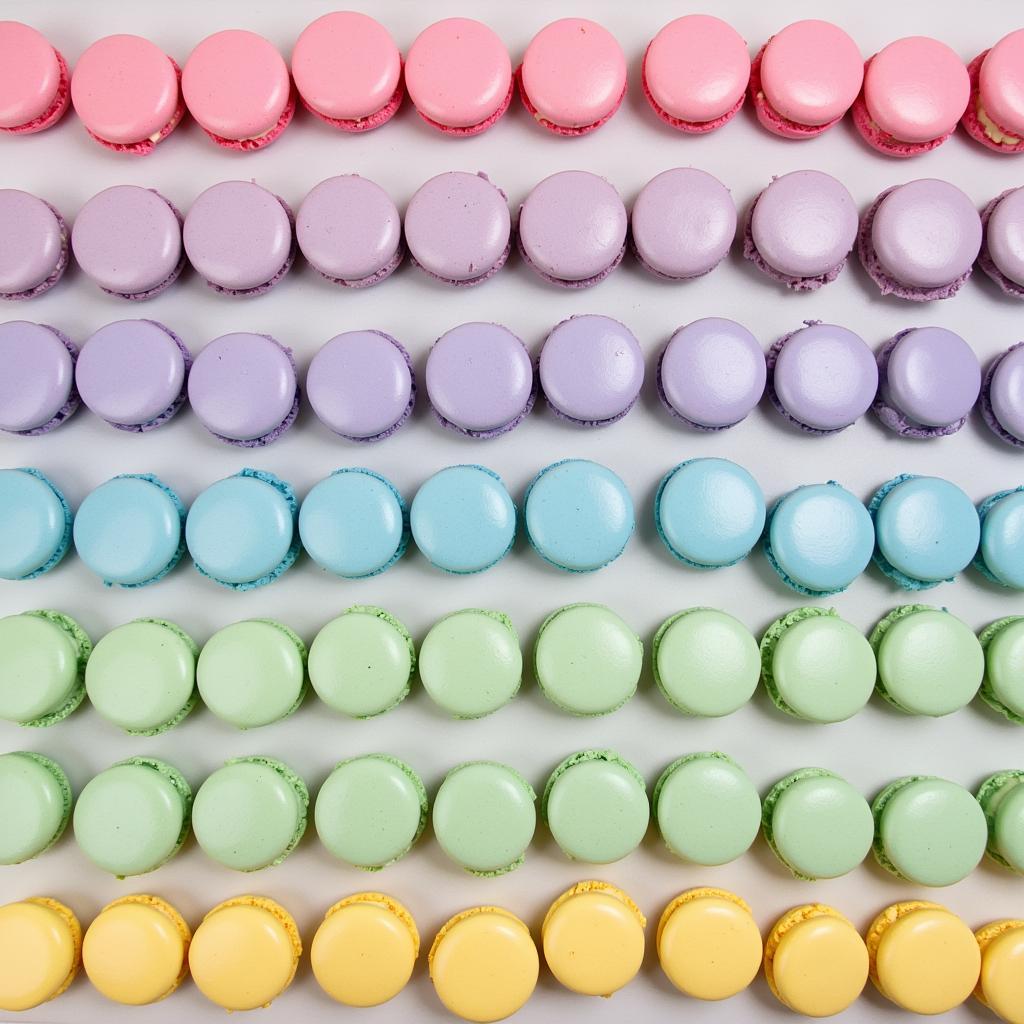Coloring egg whites can seem daunting, but with a little know-how, you can transform ordinary egg whites into vibrant culinary masterpieces. Whether you’re looking to create colorful meringues, dazzling macarons, or simply add a pop of color to your scrambled eggs, mastering the art of coloring egg whites opens up a world of creative possibilities in the kitchen. Let’s dive into the techniques and tips to achieve stunning results.
Interested in coloring deviled eggs? Check out this helpful guide: how to color deviled eggs.
Understanding the Basics of Coloring Egg Whites
Before embarking on your colorful culinary adventure, it’s essential to understand the properties of egg whites and how they react to different coloring agents. Egg whites are primarily composed of protein and water, making them a delicate canvas for color. Their neutral flavor and light texture allow them to readily absorb and showcase the vibrancy of various food colorings.
Choosing the Right Food Coloring
The success of your egg white coloring project hinges on selecting the appropriate food coloring. Gel food coloring is generally preferred for its concentrated pigment and minimal impact on the egg white’s consistency. Liquid food coloring can be used, but you may need to use more to achieve the desired color intensity, which could slightly thin the egg whites. Natural food colorings, derived from fruits and vegetables, offer a gentler approach, although the resulting colors may be less vibrant and more pastel.
Techniques for Coloring Egg Whites
There are several methods for coloring egg whites, each offering its own advantages. The most common technique involves gently folding the food coloring into the whipped egg whites. For delicate pastel hues, a toothpick dipped in the coloring and swirled into the egg whites can be effective. Alternatively, for a more marbled effect, you can drop small amounts of coloring onto the egg whites before folding.
Mastering the Art of Colored Meringues
Meringues, those airy and delicate confections, offer a perfect canvas for showcasing colored egg whites. Achieving perfectly colored meringues requires precision and patience. Start with room-temperature egg whites for optimal whipping volume. Add the food coloring gradually, ensuring even distribution throughout the meringue mixture. Over-mixing can deflate the meringue, so fold the coloring in gently until just combined.
Tips for Vibrant Meringues
To achieve truly vibrant meringue colors, consider using a higher ratio of gel food coloring. For a deeper color saturation, add the coloring towards the end of the whipping process. Avoid using liquid food coloring, as it can compromise the meringue’s delicate structure.
Creating Colorful Macarons
Macarons, those elegant French cookies, are renowned for their vibrant shells. Coloring macarons requires a similar approach to meringues, but with a few key differences. The meringue for macarons is typically made with granulated sugar, which can slightly mute the color intensity. To compensate, use a more concentrated amount of gel food coloring.
 Colorful Macarons on a Baking Sheet
Colorful Macarons on a Baking Sheet
Achieving Consistent Color in Macarons
Consistency is key when coloring macarons. Ensure the food coloring is evenly distributed throughout the meringue to avoid streaks or uneven patches. Macaronage, the process of folding the dry ingredients into the meringue, can also affect the color intensity. Be careful not to over-mix, which can dull the colors.
What is French Grey color? Find out here: what is french grey color.
Beyond Desserts: Creative Uses for Colored Egg Whites
While meringues and macarons are popular applications for colored egg whites, there are countless other creative uses. Imagine vibrant scrambled eggs for a whimsical breakfast, or colorful omelets that delight the eye. You can also use colored egg whites in savory dishes, such as soufflés or quiches, to add a touch of visual flair.
Troubleshooting Common Coloring Issues
Sometimes, despite our best efforts, unexpected coloring issues can arise. Streaky egg whites can be caused by uneven distribution of food coloring. Dull colors may result from using too little coloring or using liquid food coloring. If your egg whites become too runny, you’ve likely added too much liquid coloring.
Expert Insights
Maria Sanchez, a renowned pastry chef, emphasizes the importance of quality ingredients: “Using fresh, high-quality egg whites is crucial for achieving vibrant and consistent colors. The fresher the eggs, the better they will whip and hold the color.”
Conclusion
Coloring egg whites is a simple yet rewarding technique that can elevate your culinary creations. Whether you’re aiming for pastel hues or bold shades, mastering this skill opens a world of creative possibilities. By understanding the basics, choosing the right food coloring, and following the proper techniques, you can transform ordinary egg whites into vibrant works of art.
Are you curious about the color Urbane Bronze? Learn more here: what color is urbane bronze.
FAQs
-
What type of food coloring is best for coloring egg whites?
Gel food coloring is generally preferred. -
Can I use natural food coloring?
Yes, but the colors may be less vibrant. -
How do I prevent streaky egg whites?
Ensure the food coloring is evenly distributed. -
Why are my meringue colors dull?
You may be using too little coloring or liquid food coloring. -
What can I do if my egg whites become too runny?
Reduce the amount of liquid you add, or use gel food coloring. -
Can I color egg whites for savory dishes?
Yes, you can add color to soufflés, quiches, and other dishes. -
How can I achieve deeper meringue colors?
Add the coloring towards the end of the whipping process.
Wondering about the shade Purple Gray? Take a look at this article: what color is purple gray.
Have other questions about making colorful deviled eggs? Check this out: how do you make colored deviled eggs.
Need help with your color choices? Contact us! Phone: 0373298888, Email: [email protected] or visit us at 86 Cau Giay, Hanoi. We have a 24/7 customer service team.

